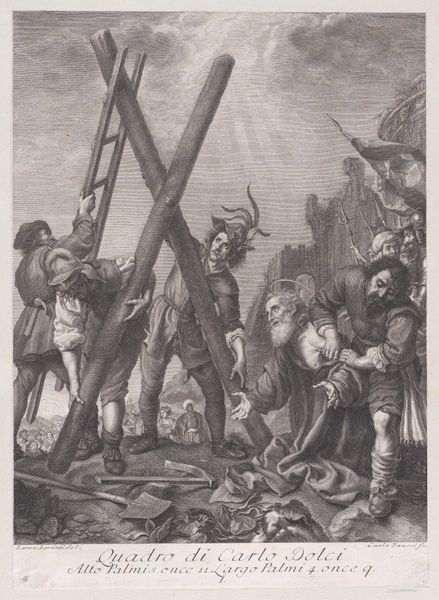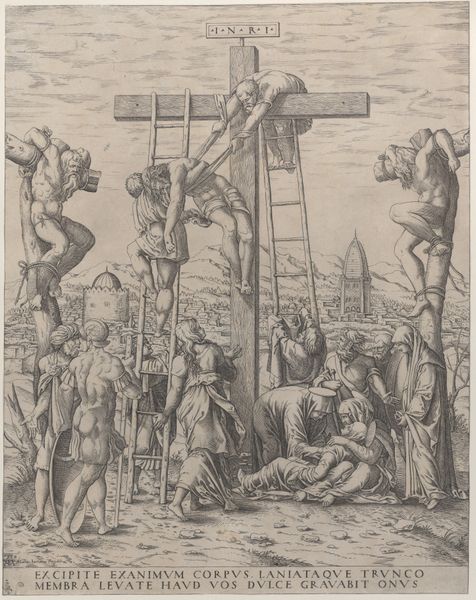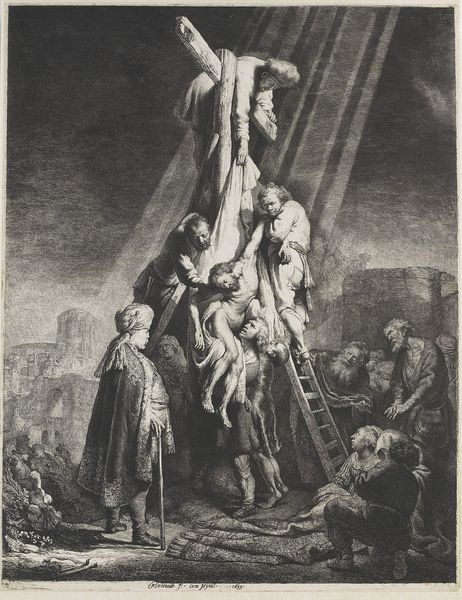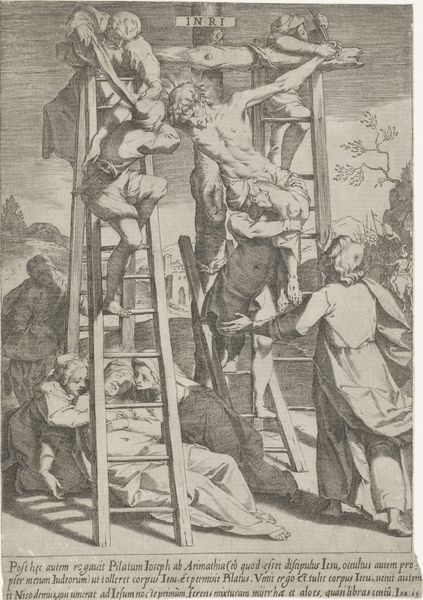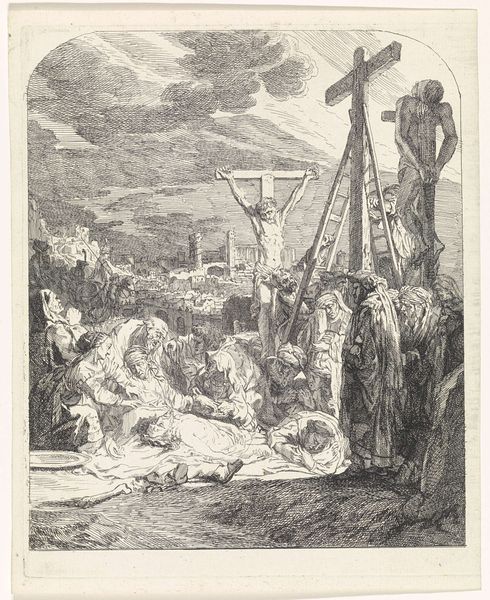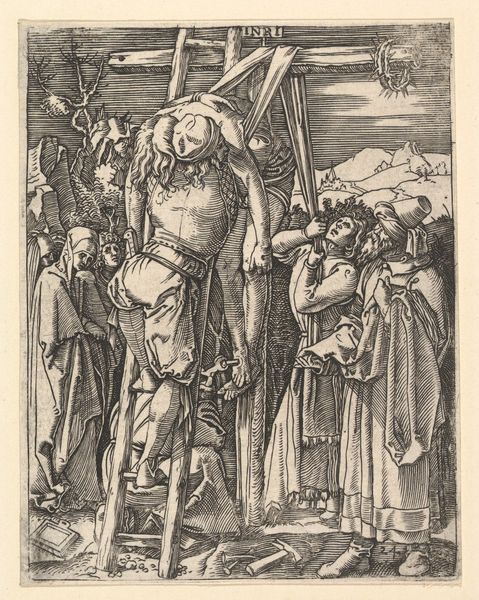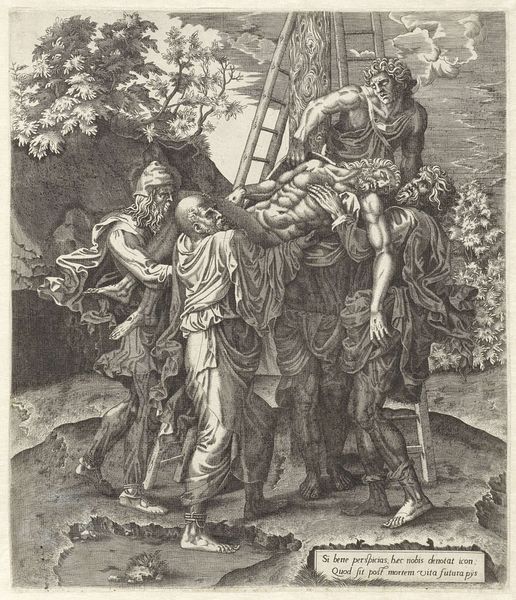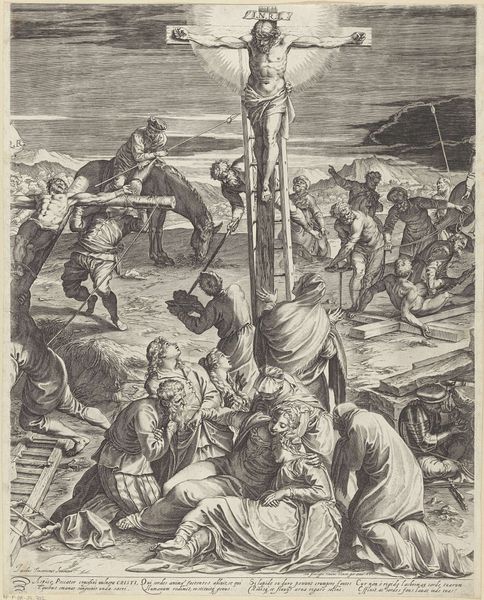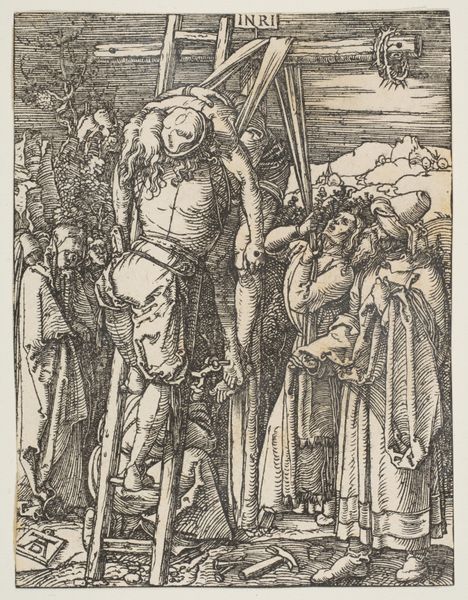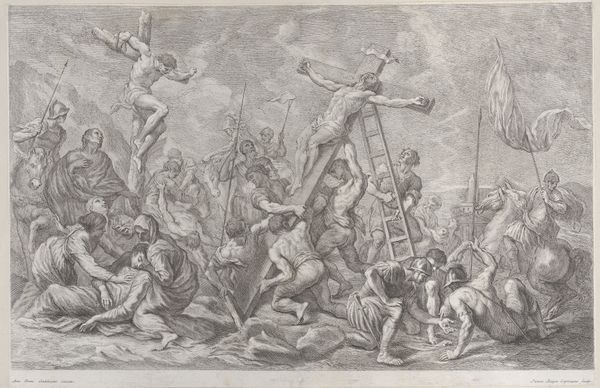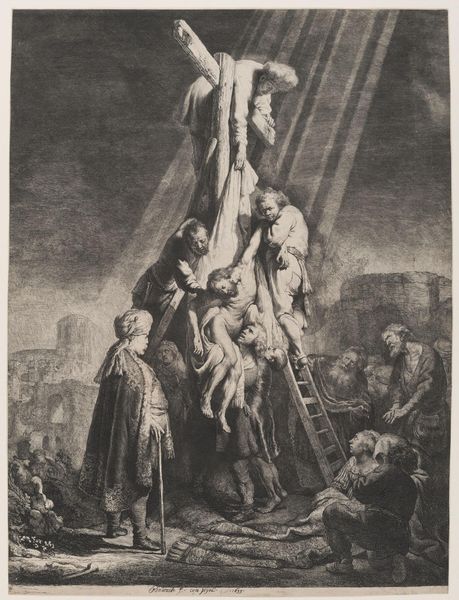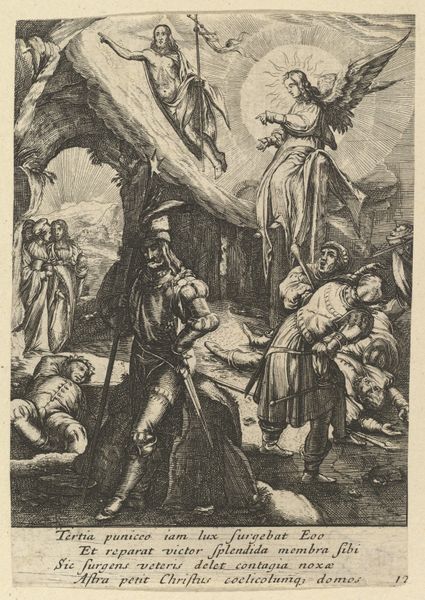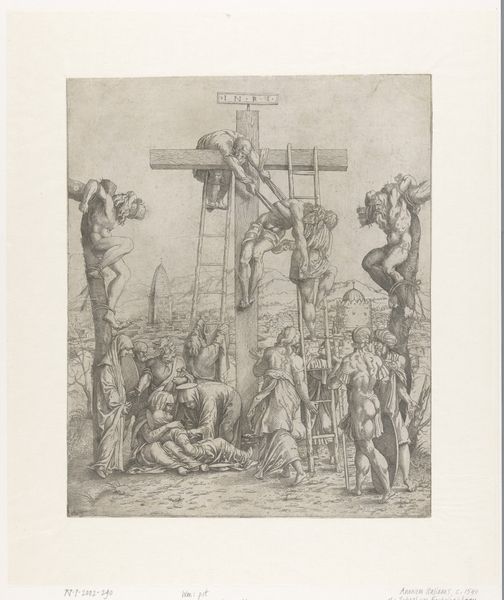
Dimensions: Plate: 16 15/16 × 12 13/16 in. (43 × 32.6 cm) Sheet: 17 5/16 × 13 3/16 in. (44 × 33.5 cm)
Copyright: Public Domain
Curator: Today, we're looking at "Saint Andrew kneeling and adoring the cross," an engraving created in 1768 by Carlo Faucci. It is currently housed at the Metropolitan Museum of Art. Editor: The dramatic lighting immediately draws me in. The cross looms so large, it seems to almost bisect the composition, highlighting the figures who are actively participating in or witnessing the scene. The saint seems to adore this tool of violence, the composition’s tonal range, going from black to near white, definitely drives that emotion, despite it being so simple and small, it dominates this large canvas. Curator: It's a history painting, part of a visual culture reinforcing religious devotion. Consider the institutions and social structures in play then, specifically how the church promoted martyrdom. How does this image serve those interests? Editor: That's a key question, isn't it? Looking at it through the lens of power, we see Saint Andrew, not as simply adoring, but as surrendering, potentially romanticizing oppression. It raises questions about how we view resistance and complicity in systems of injustice. Are the cherubic figures there as holy witness, or part of the system and hierarchy that creates a culture of compliance with tyranny? Curator: Exactly! It is the visualization of a powerful doctrine designed to affect social practice and policy. Notice the positioning of Andrew on his knees? The hierarchy is quite explicit in the piece, you almost expect to see someone with a gavel come into frame. Editor: It really forces you to consider the ways religious iconography can be manipulated. It presents such an unbalanced relationship and encourages devotion no matter the cost. What seems, initially, to be holy could also be construed as a social practice. It’s interesting, given modern social, ethical, and artistic contexts. I will have to sit with it further. Curator: Indeed. It reveals how imagery is very much politically charged and always speaking to how a status quo should exist. Thanks for your insight on how the messaging is constructed. Editor: Thank you, as well. It provides great context for reflecting on how the echoes of historical religious impositions continue to shape our world and actions today.
Comments
No comments
Be the first to comment and join the conversation on the ultimate creative platform.
